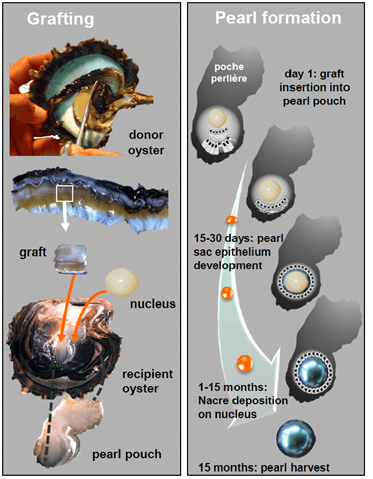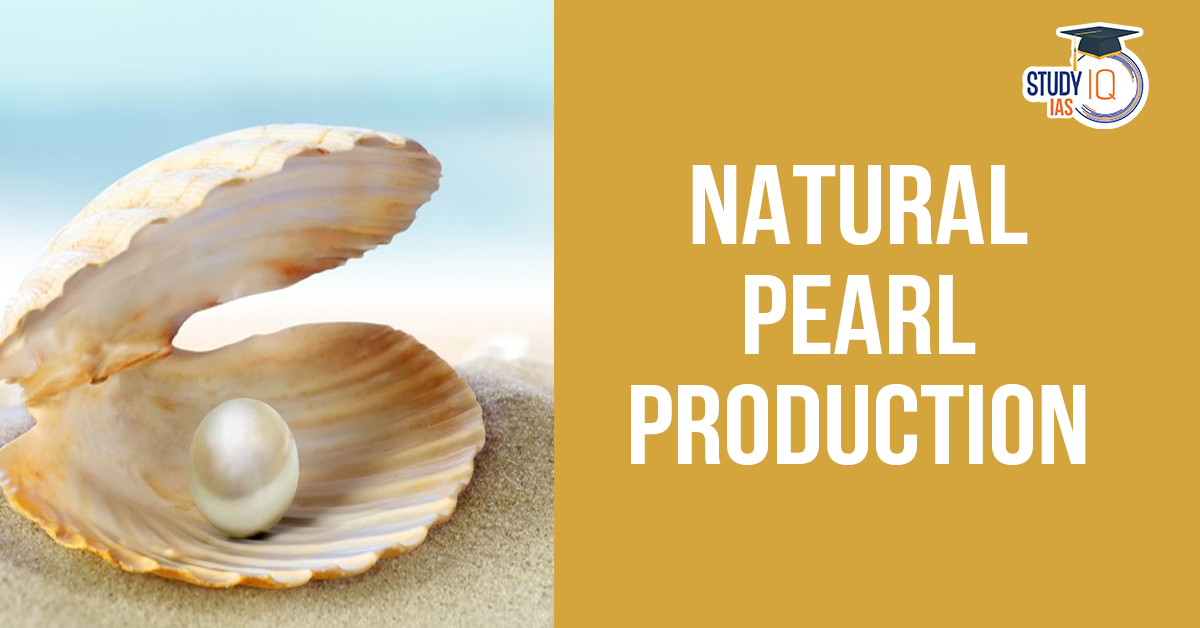Table of Contents
About Natural Pearls
- Natural pearl farming involves the cultivation of pearls through sustainable methods in freshwater or marine environments.
- Pearls are the only gemstones in the world that come from a living creature.
- Mollusks such as oysters and mussels produce pearls.
- States Practicing Pearl Farming: Gujarat, Maharashtra, Bihar, Odisha, Kerala, Rajasthan, Jharkhand, Goa and Tripura.
- Advantages of Pearl Farming: Alternate source of income for farmers, Low Environmental Impact, Employment Opportunities & Promotes Eco-Tourism

Process of Natural Pearl Farming
- Selection of Mollusks
- Marine pearl oysters (e.g., Pinctada species) and freshwater mussels are commonly used.
- The mollusks must be healthy and suitable for culturing.
- Seeding/Grafting Process
- A small irritant, typically a bead or tissue, is introduced into the mollusk.
- This process stimulates the secretion of nacre (the material that forms the pearl).
- Culturing Period
- The mollusks are placed in controlled environments such as cages or rafts in water bodies.
- The cultivation period ranges from 6 months to several years, depending on the type of pearl and environmental conditions.
- Harvesting
- Pearls are carefully extracted without damaging the mollusk.
- High-quality pearls are sorted and graded based on size, shape, color, and luster.
- Post-Harvest Processing
- Pearls may undergo cleaning, polishing, and grading before being marketed.


 UNEP Champions of the Earth Award: UN's ...
UNEP Champions of the Earth Award: UN's ...
 Shilp Didi Programme: Empowering Women A...
Shilp Didi Programme: Empowering Women A...
 Is the Falling Rupee a Cause for Alarm?
Is the Falling Rupee a Cause for Alarm?

























